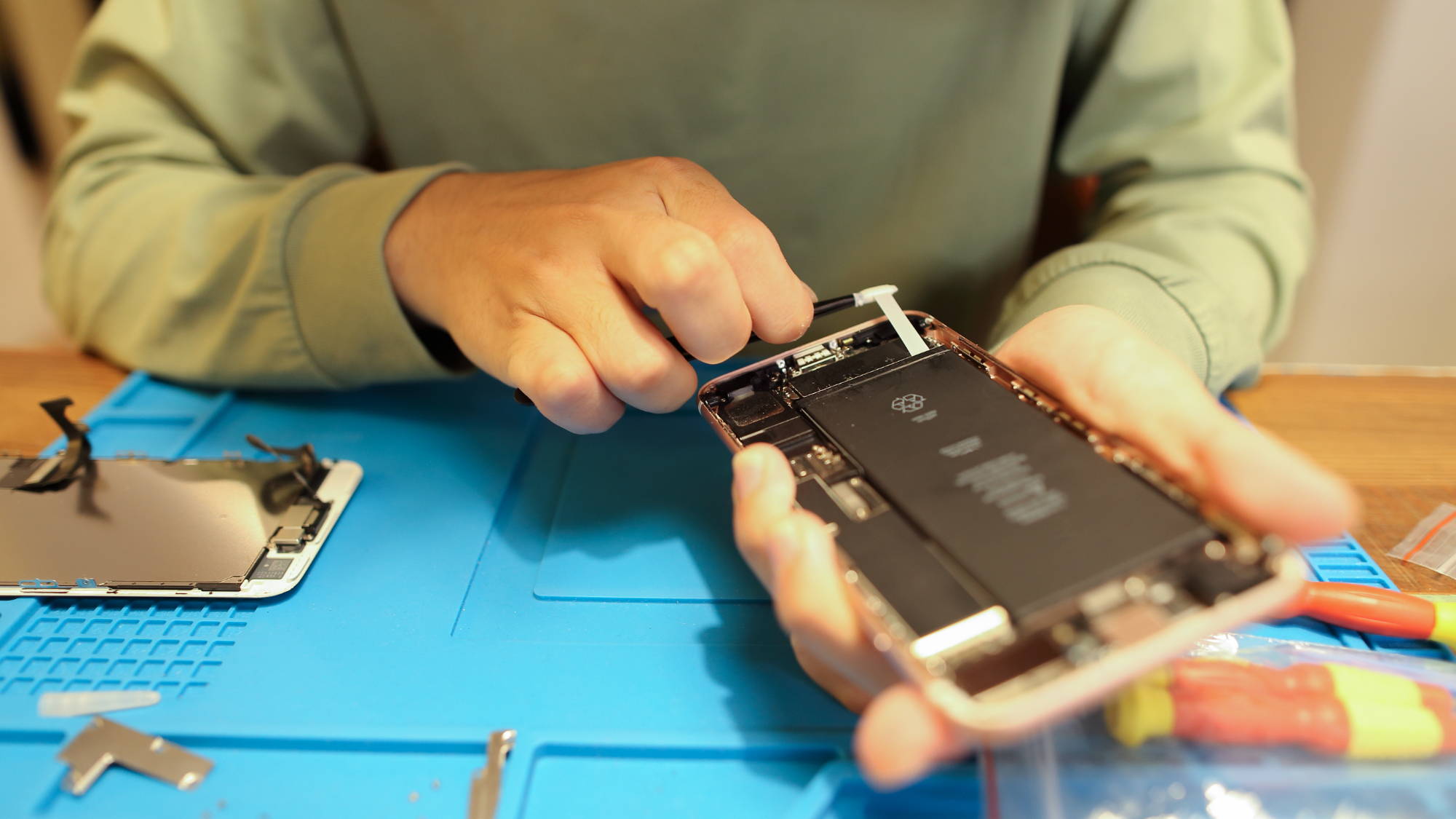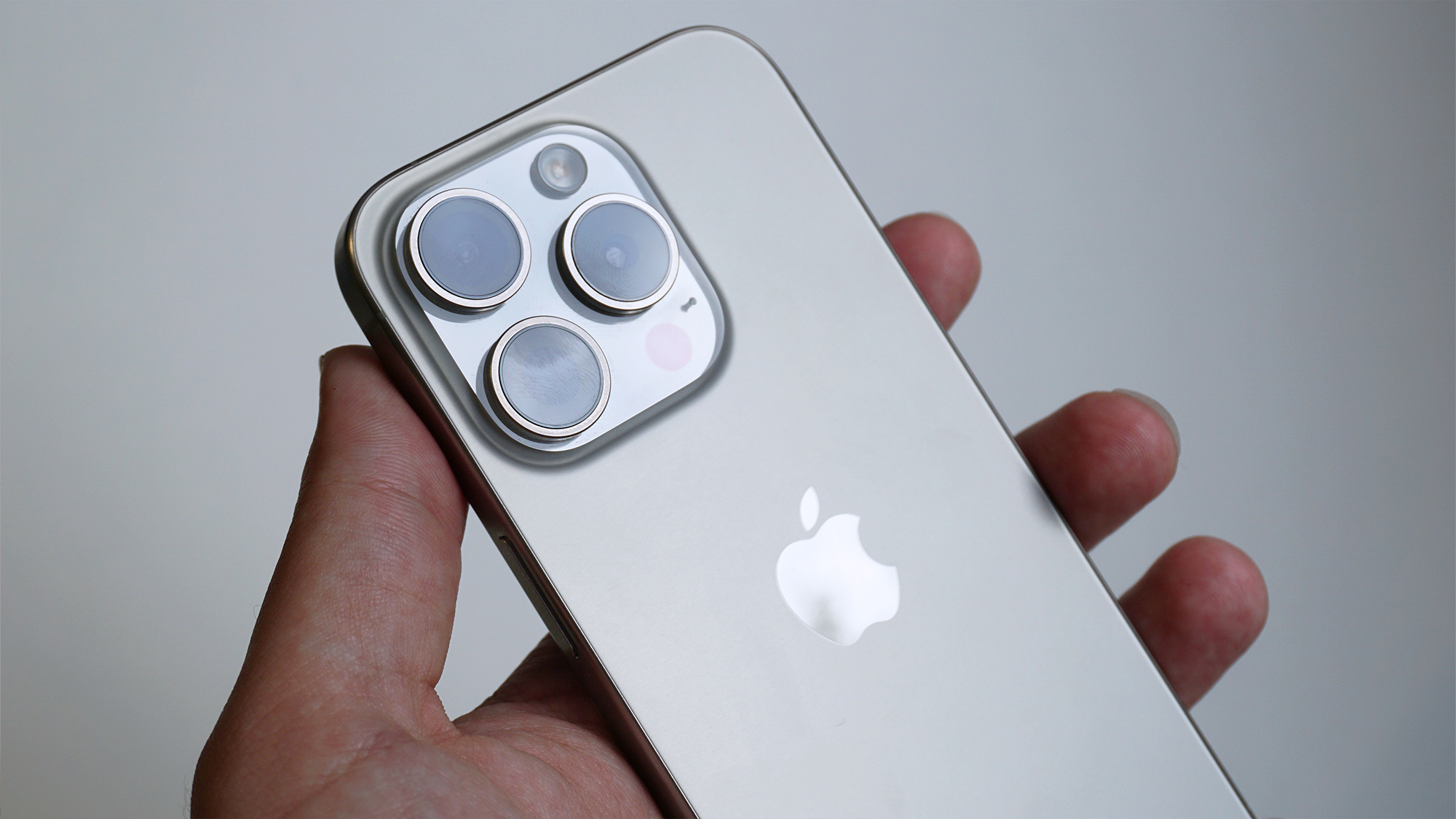I’ve replaced hundreds of iPhone batteries and this new technology would definitely make doing it yourself easier — but if you’re expecting a simple battery swap at home like the good ol’ days think again
Easier, yes. But not for you.

Replacing the battery in an iPhone can be a challenging ordeal even for the most tenured member of Apple’s Genius Bar, I should know, I used to work in an Apple Store. Lithium-ion batteries degrade over time and most people who keep their iPhones for more than two years will reach a point where they need to replace the component in order to get the best experience from their aging smartphone — a service usually best-provided by Apple.
Apple will need to change the way it implements batteries in the best iPhones in order to make them easier to replace in line with incoming 2027 EU guidelines, and a new technology looks to be the way that the company will achieve that.
With reports of the iPhone 16 and newer adding "electrically induced adhesive debonding" to the back of batteries, it got me thinking about the hundreds of batteries I’ve replaced during my time working at the Apple Store and what this would mean for technicians and consumers alike.
Bye-bye unbearable adhesive

In Layman’s terms, to replace the battery on most modern iPhones you need to remove the display, unscrew some components like the Taptic Engine, and pull adhesive strips from the bottom of the battery before it comes loose. After that you stick a new battery down, attach the components, add new display adhesive, and close the iPhone shut. It’s a fairly simple process but the stretch adhesive used on iPhone batteries, while it has improved over the years, is still incredibly infuriating.
To remove the stretch adhesive you need to use a tool to try and pry it away from the battery and then slowly pull so as not to snap the adhesive tab. It can be incredibly stressful as if you pull too hard the adhesive snaps and the battery is stuck for good, leading to a full unit replacement of the device and sometimes customer data loss. There’s also the danger of accidentally prodding the battery with whatever tool you use to remove the adhesive (often a spudger that you rotate to pull a little at a time). Considering the chemicals inside a lithium-ion battery, the last thing you want to do is create a safety hazard that would lead to the Repair Room’s evacuation.
The new incoming repair standards set by the EU for 2027 want batteries to be much easier to replace, but that doesn’t mean it’ll be any easier for the consumer. At first, when I read that Apple was looking to change the way batteries are implemented into iPhones, the 90s kid in me dreamed of a world where you could just pop open the back of the smartphone and replace the battery whenever you see fit — this is not the case, and I doubt it ever will be.
The new implementation process would instead allow technicians and people who know exactly what they are doing in terms of iPhone repairs to remove a battery encased in metal by using a small jolt of electricity. It’s a very interesting evolution of the way iPhone batteries are made and one that I’m sure would make a lot of my ex-colleagues breathe a sigh of relief — bye-bye annoying adhesive.
Master your iPhone in minutes
iMore offers spot-on advice and guidance from our team of experts, with decades of Apple device experience to lean on. Learn more with iMore!
- iPhone deals: Verizon | AT&T | Mint Mobile
But what about me?

The thing is, iPhone battery replacements will probably never be simple enough for your average Joe to do on a whim at home. Even people like myself who have years of experience replacing batteries wouldn’t replace one at home without the necessary equipment. Of which, one of the most important components to any repair, is tables with earthing band connections so you don’t short circuit the whole motherboard.
In the distant future, we might see a world where you can just pop a battery out and pop one back in. Considering the adhesive used to ensure an iPhone is water and dust-resistant, there would need to be major evolutions in technology to achieve the amazing resistance to the elements we’ve come to appreciate on Apple’s smartphones.
Until then, any major improvement that makes an iPhone easier to repair is welcomed but don’t get too caught up on the news that iPhone batteries will be more user-friendly to replace because most of us will still need to head to the Apple Store when it’s time for a new one.

John-Anthony Disotto is the How To Editor of iMore, ensuring you can get the most from your Apple products and helping fix things when your technology isn’t behaving itself. Living in Scotland, where he worked for Apple as a technician focused on iOS and iPhone repairs at the Genius Bar, John-Anthony has used the Apple ecosystem for over a decade and prides himself in his ability to complete his Apple Watch activity rings. John-Anthony has previously worked in editorial for collectable TCG websites and graduated from The University of Strathclyde where he won the Scottish Student Journalism Award for Website of the Year as Editor-in-Chief of his university paper. He is also an avid film geek, having previously written film reviews and received the Edinburgh International Film Festival Student Critics award in 2019. John-Anthony also loves to tinker with other non-Apple technology and enjoys playing around with game emulation and Linux on his Steam Deck.
In his spare time, John-Anthony can be found watching any sport under the sun from football to darts, taking the term “Lego house” far too literally as he runs out of space to display any more plastic bricks, or chilling on the couch with his French Bulldog, Kermit.
